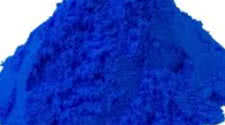Vanadyl Sulfate Supplement Health Benefits for Athletes

Advanced Health & Nutrition Files
Popular with bodybuilders and other athletes, vanadyl sulfate is a form of the trace mineral vanadium. The prevailing theory accounting for vanadyl's effectiveness is its ability t9 duplicate many of the anabolic functions of insulin without producing the attendant side effects,
such as hypoglycemia (low blood sugar), which is often brought on by injudicious insulin usage. Many anecdotal reports from bodybuilders who take supplemental vanadyl sulfate indicate increased training recovery, a superior muscle pump during training and a feeling of extreme
hardness in muscles when flexed. Most often, these effects are attributed to a possible combination of increased transport of glucose to muscle tissue and more efficient synthesis of muscle glycogen.
If this were true, vanadyl would indeed favor increased muscle recovery after intense exercise. The effect of vanadyl's parent mineral form, vanadium, on blood-sugar levels has been known since 1899, 22 years before the discovery of insulin. However, in the years following that
initial observation of vanadium's effects, the only references to the mineral concerned its toxic effects in animal studies and the possibility that it might somehow reduce elevated cholesterol levels. Beginning around 1980, all that changed. At that time, experiments on lab
rats showed that vanadyl sulfate chemical that selectively destroyed the insulin-producing cells located in the pancreas. These actions of insulin included glucose transport and the .entry of amino acids into cells, Scientists investigating vanadyl noted that the trace mineral
appeared to prevent some of the dangerous effects of diabetes, such as cardiac dysfunction. Vanadyl sulfate is a reduced form of which is converted into the former the biologically active form mimicked. Some of the actions of insulin in rats that had been made diabetic through
administration of upon entry into cells.
Significantly, vanadyl sulfate is also far less toxic than vinadate or vanadium. These features appeared to give it promise as a body building supplement. But problems still existed with vanadyl. For one, research showing its beneficial effects involved test tube studies of rat
skeletal muscle. More ominous were findings that showed that vanadyl exerted toxic effects in rats, leading to death in some instances. The doses used in those studies, however, were far greater than amounts any rational human would utilize. Diabetic humans used in more recent
studies revealed a more satisfactory tolerance of vanadyl, with mild gastrointestinal distress, as the only side effect.
Still, the question of vanadyl's actual worth for hard-training bodybuilders remained unanswered. However, a study published recently in the international Journal of Sport Nutrition (6:382-90, 1996) examined the effects of vanadyl in a weight-training population for the first
time. The study began with 40 subjects; at the end, 31 remained. (Several dropped out later for unrelated reasons. Two left because of side effects,) Of those who finished the study, 11 men and four women constituted the vanadyl group, while 12 other men and four women were assigned
to a placebo group. The average age of these subjects was 28, and all had at least a year of training experience under their belts. In addition, none took anabolic steroids or other anavanadium, anabolic substances during this experiment. All of the non placebo subjects took doses of
vanadyl sulfate equal to 0.5 milligram (mg) per kilogram (2.2 pounds) of bodyweight, which amounts to a 50-mg doily dose for a 200-pound man The supplement was taken with meals.
The study lasted 12 weeks. By the halfway point, two men in the vanadyl group had dropped out. One dropout complained of "excessive tiredness" during training; the other experienced both tiredness and adverse mood changes, including feelings of aggression and shortened temper.
For those taking vanadyl sulfate for 1 2 weeks, test results showed no changes in body composition. (Those taking the vanadyl did become a little fatter after the first four weeks, but this effect was short-lived.) The vanadyl group also showed small but significant increases in
blood glucose and insulin, leading the researchers to suggest that vanadyl might diminish insulin action.
The exercise-and-strength part of the study involved testing in two exercises: bench presses and leg extensions. Those taking the vanadyl showed a performance increase in the leg extensions but no increase in muscle size. Many of the subjects had not performed leg extensions
prior to the study, so their performance increase in that exercise may or may not hove resulted from vanadyl intake. The authors of the study noted that 20% of the subjects using vanadyl felt increased tiredness during and after training. They also concluded that any ergogenic
effects from vanadyl would most likely occur during the first month of use.